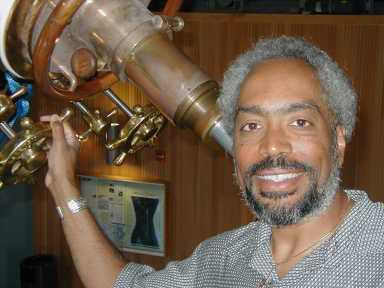 |
Alien Worlds The Search for Other "Earths" 8:00 pm Monday March 13th, 2006 |
| "We stand ever closer to the point in human development when we will learn whether we are alone in the Galaxy, or likely to be part of a teeming community of planets with life on them." |
California Theatre, 345 S First Street, downtown San Jose Tickets Available |
| Dr. Gibor Basri Professor of Astronomy University of California at Berkeley Gibor Basri received a BSc in Physics from Stanford Univ. in 1973, and a PhD in Astrophysics from the Univ. of Colorado, Boulder in 1979. His work in the 1980s concentrated on star formation and the study of T Tauri stars, as well as continuing studies of stellar activity. In the past decade he has continued work on these topics, as well as becoming a world expert in the study of brown dwarfs. He wrote an Annual Reviews of Astronomy and Astrophysics article on "Observations of Brown Dwarfs" in 2000, and delivered a plenary lecture to the American Astronomical Society entitled "Brown Dwarfs: Up Close and Physical" in 2004. He has written numerous review articles, along with well over 100 technical publications. GB was awarded a Miller Research Professorship in 1997, and became a Sigma Xi Distinguished Lecturer in 2000. He has served on committees helping to award major NASA and NSF grants and projects, and awarding time on the (world's largest) Keck telescopes. He is increasingly involved in science education, and encouraging the participation of minorities in science. One such effort is service on the Board of the Chabot Space and Science Center. |
During the last decade, astronomers have finally begun finding planets around other stars. We still don't know how common they are, and we know nothing about the number of planets like the Earth (none of the planets found so far are likely to even have a surface you could stand on). Professor Basri will describe what we have learned so far, and what we think we know about planet formation, which suggests that terrestrial planets should be common. He is involved in the new NASA mission named "Kepler", which intends to directly answer the question by finding many such planets. This dedicated space telescope should be launched in the next few years, and will monitor more than 100,000 stars. It looks for the telltale dip in their light caused if a planet crosses in front of them (the "transit" method, which is currently the best way to find Earth-sized planets). Professor Basri will describe this exciting mission, and evaluate its chances for success.
|